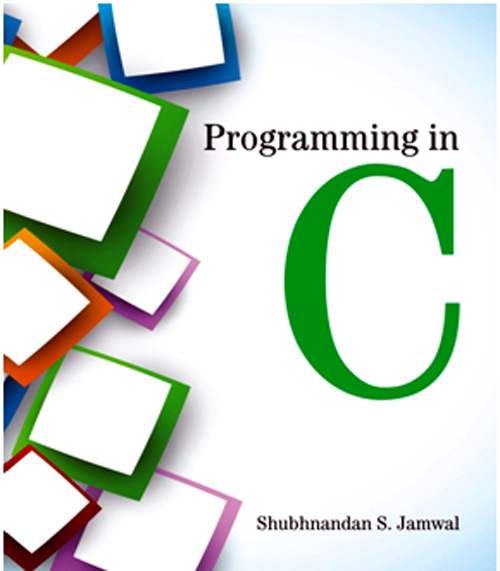Dr Lalitsen Sharma
Author : Dr. Shubhnandan S. Jamwal
ISBN : Publisher : Pearson Dorling Kindersely (India) Pvt. Ltd
It’s pleasure to welcome the arrival of a book on C programming written by Dr. Shubhnandan S. Jamwal, Assisitant Professor in PG Department of Computer Science and IT, University of Jammu. I provide here a brief review of the book for the students of MCA, BE, B.Tech, M.Sc or any other course covering the C language. The book is an introductory text on C programming and is suitable for postgraduate and undergraduate course in C.
The book is also available on line at the address http://www. pearsoned.co.in/web /books/9789332525610_Programming-in-C_Shubhnandan-Jamwal.aspx.
The book, which was formally released by Prof. Mohan Pal Singh Isher, Vice Chancellor University of the Jammu, consists of 10 chapters and contains more than 110 solved problems. All of the programs given in the book are tested compiled and run. The book provides line by line explanation of the concepts and logic used in the programs. First chapter starts with the basics of C and fundamental concepts of a programming language such as data types, variables, literals, console I/O whereas the second chapter explains the use of control statements and operators. Third chapter discusses about looping statements through a good number of solved examples. Chapter 4 briefly describes the concept of the modular programming and provides a detailed discussion on functions. Besides explaining these concepts with the help of programs, it also explains recursion with its advantage in impetuous conditions and the creation and use of user defined header files. Chapter 5 covers subscripted variables that are arrays and strings; on the other hand, Chapter 6 elucidates the use of arrays and pointers by taking practical examples. The user defined data types such as structures and unions alongwith their use has been discussed in the seventh chapter and eighth chapter examines the storage classes and operations on bits by presenting solved programs on bit wise operation. Chapter 9 explains data files; an important part of C programming, with ready to use programs that covers all type of file organizations available in C. Chapter 10 introduces the concept of dynamic memory allocation. It illustrates, through the programs, the use of dynamic memory allocation and de-allocation by using operations on linked lists.
At the end of every chapter of the book, summary of the chapter and keywords are provided which are useful for quick revision of the concepts learnt. By providing multiple choice questions, short answer questions and hands-on exercises the author has added to the advantage of the book. The appendices are given at the end of the book and cover the list of library functions, ASCII codes and the precedence of the operators.
So the book is good text book for the beginners and for the students of M.C.A., B.E., B.Tech., M.Sc. or any other course introducing C language who intend to start programming in C.
(The author is Associate Professor Dept. of Computer Sc. & IT University of Jammu, Jammu)


